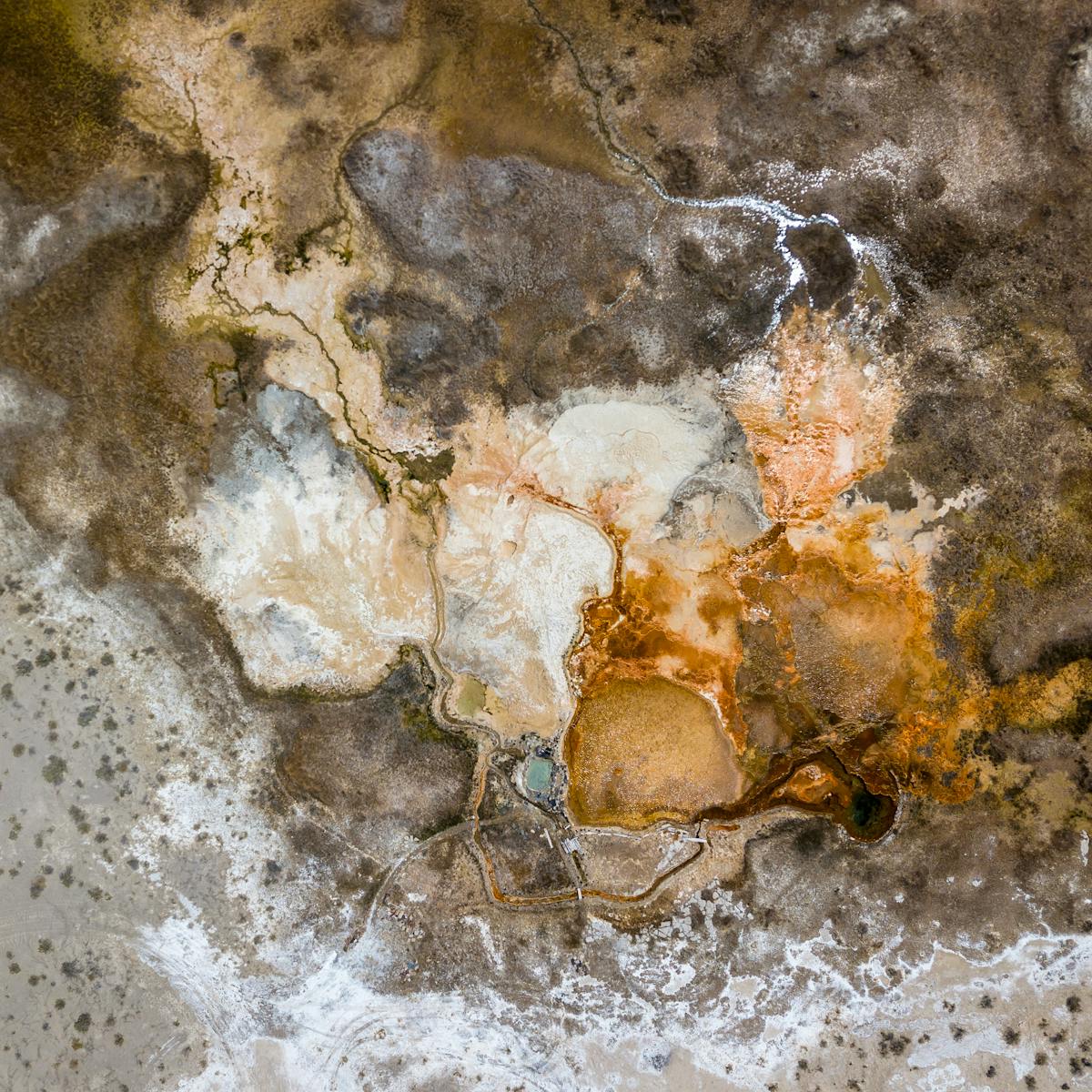After a period when it became impossible to cope, Laura Grace Simpkins restarted her research into lithium with a new sense of urgency. As her investigation broadened, she moved on from her medication’s impact on mental and physical health to trying to untangle some uncomfortable truths about where and how it is produced. Will the social and environmental costs of lithium mining irrevocably alter how she feels about the drug?
The side effects of lithium mining
Words by Laura Grace Simpkinsphotography by Matjaž Krivicaverage reading time 6 minutes
- Serial

Approximately halfway through my master’s I stopped being able to cope. It might have been because I was being kept awake by second-year student parties until five in the morning, or because I resented the pretentiousness of the course and nearly everyone on it, or because I was having a bipolar relapse. Regardless of the reason, I was encouraged to leave Cambridge and complete my degree from home. This I did, although my thesis was undoubtedly the worst thing I have ever written.
To write the worst thing I have ever written, I got rid of all my furniture and put my mattress on the floor, insisting I had to be closer to the earth. My duvet and pillows made an île flottante on the laminate boards. Cocooned in blankets and sheets, I was an expectant chrysalis waiting to be butterflied.
I would write nonsense until four in the morning, wake up the next day and break down because the “colours of each paragraph” didn’t quite “align”. I handed in the thesis and was astounded when I passed my degree. (Later, I understood my previous grades had dragged up my mark, kicking and screaming.)
Even after I’d finished, I kept myself sequestered away. Swaddled like a giant baby for three months, I had forgotten the urgency I’d previously felt about my lithium investigation. At last I peeled back the bedclothes and shimmied into a proverbial trench coat and trilby, magnifying glass in hand.
I wanted to visit Bolivia but was unable to afford a plane ticket. Even if I’d been able to, travelling there would have been excessive and unnecessary. Also, I was terrified of flying. All that considered, I determined I would carry out my research the way I knew best: from the comfort of a mattress on the floor in the confines of my parents’ home.
A pattern of harm
My objective was simple. Aside from me, what and who else was lithium affecting?
The common environmental side effects of lithium mining are water loss, ground destabilisation, biodiversity loss, increased salinity of rivers, contaminated soil and toxic waste. In the Salar de Uyuni, water loss is the main cause for concern.
After the brine is pumped out from underneath the salt flat, it is left to evaporate through a series of ponds for 12–18 months, forming a mixture of potassium, magnesium, borax and lithium salts. For a tonne of lithium, up to 2 million litres of water are required. The majority of this is lost to the sky. In ‘The Indigenous State’, anthropologist Nancy Postero highlights the “big question”: “Where will the water come from for all this?”
There are fears that the water levels are already going down, causing droughts and desertification in some pockets of the Salar. This will have ramifications across the entire ecological network: from the impressive array of microorganisms in the brine (some bacteria may survive lithium processing, staying alive even when transformed into batteries. I was absolutely enchanted by this idea, for obvious reasons!) to the few macroorganisms who frequent the salt flat.
Among those are Chilean, Andean and James’s flamingos, who holiday in Bolivia during the summer months to blow off steam and to procreate. I read a piece of fieldwork by ecologists Marita Davison and Jennifer Moslemi, who study flamingos at the Altiplano lakes. These birds – iconic and fabulous with their bright pink plumage – are already vulnerable because of their easily disturbed breeding patterns. Water loss in the Salar could make them extinct.
It’s feared water levels are going down, causing droughts and desertification… This will have ramifications across the entire ecological network.
The adverse effects of lithium mining, especially the water loss, are impacting people too. The Indigenous Aymara community lives and works around the Salar. Many grow quinoa, raise camelid livestock, and sell salt and flamingo eggs, traditional forms of income generation which, after hundreds of years, are now being compromised. Rolando Humire, an Aymaran leader, warns that how lithium is currently being mined is “certainly not sustainable”.
Some Aymaran people are in favour of lithium mining. An article in The Washington Post reports that the plants provide employment and pay yearly compensation for land and water rights. However, the mining corporations and the Bolivian government have been criticised for overstating the number of non-specialised jobs that would be available, swindling Indigenous communities where their natural resources are concerned, and downplaying the physical risks associated with mining.
In ‘The Extractive Zone’, sociologist Macarena Gómez-Barris notes that, “Within mining, female Indigenous workers have often been relegated to secondary status,” and warns against disregarding the “thousands of women and children [who] have labored as porters, recycling mining extraction’s toxic materials”. Gómez-Barris reminded me to unpick my assumptions about who workers are and to think more rigorously about how they might be harmed.
Water and bacteria and feathers and skin
Two years before, I had titrated onto lithium under the steady gaze of a psychiatrist and a team of nurses and a doctor. In 2019 I was having regular blood tests every three months. For workers at the plants, prolonged unmonitored respiratory exposure to lithium was sometimes followed by a build-up of fluid in the lungs. It could also occasion nervous-system disorders. What was becoming increasingly clear to me was that my medication came at a devastating cost to Indigenous livelihoods – and lives.
What was so ironic, what made it more unjust (in my opinion), was that lithium has no medical purpose for the Aymara people, or anyone else who lives around the salt flat. “The Salar was an obstacle years ago,” an unnamed local told economist Maria Daniela Sanchez-Lopez in an interview. “No one knew about lithium. Before the rainy season, people had to cross it and go to Uyuni to buy things in advance because later it was impossible.”
What was becoming increasingly clear to me was that my medication came at a devastating cost to Indigenous livelihoods – and lives.
All of a sudden, I could see myself. The punchline of a surreal and satirical joke: an unemployed white person lounging around on a mattress on the floor of a bedroom in her parents’ house, limp hand proffered and mouth agape, impatiently awaiting the latest batch of lithium shipped in from the mines. There was something very, I don’t know, colonial about the image conjured by my mind’s eye.
Each time I gulped down two 400 mg tablets with a glug of water before I went to bed, the chemical and salt taste was now tainted by a grotesque blend of water and bacteria and feathers and skin. It left a residue that fizzed and spluttered like popping candy.
They didn’t put that on the packet, did they?
About the contributors
Laura Grace Simpkins
Laura Grace Simpkins writes and performs about herself, madness and death. Her writing has been published by the Guardian, New Scientist and the British Medical Journal’s Medical Humanities, as well as broadcast on BBC Radio. She is currently working on her first book.
Matjaž Krivic
Matjaž Krivic is a documentary photographer capturing stories of people and places, primarily focusing on environmental issues. For over 25 years he has covered the face of the earth in his intense, personal and aesthetically moving style that has won him several prestigious awards. The past six years he has been immersed in the visual documentation of the lithium industry and also how companies and even countries are essentially washing away the climate sins of the past to create a greener and sustainable future.

